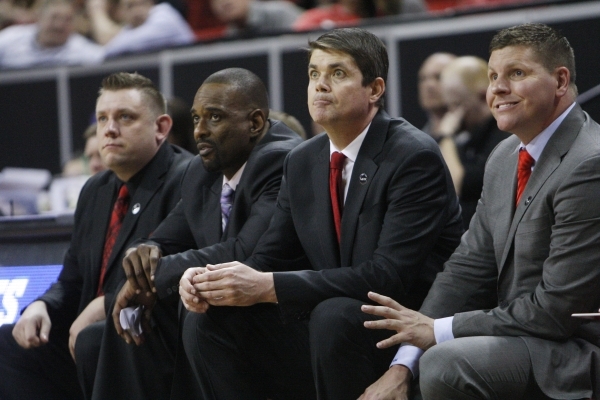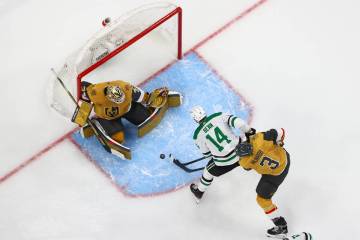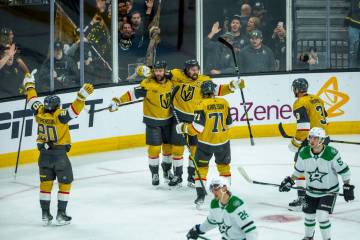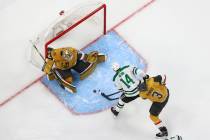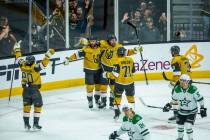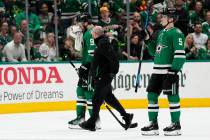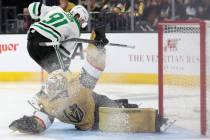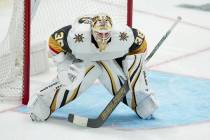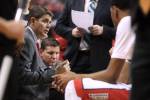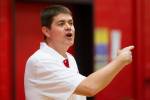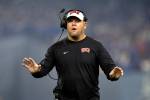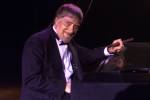Shorter shot clock no magic wand for college basketball
This is not meant to burst any bubbles, but prepare for a pretty massive bazooka-like blast: The move by college basketball to a 30-second shot clock this season has every chance to deliver the opposite of intended results.
Here's a popular theory: That in reducing the clock by five seconds, a game that has become slower in stages than your next Windows update download will become swifter in tempo and more efficient in scoring.
Here's a popular counter: LOL.
It's true that moving away from a 35-second clock inevitably will add more possessions for teams over the course of a season, that finally joining the women's game in having a 30-second clock and creeping to within six ticks of the NBA game should increase pace and shot attempts from the men.
But this isn't going to produce some extreme makeover. Ty Pennington isn't going to show up offering anyone a new house for scoring an extra point a game.
In truth, it could on many nights lead to an even uglier version of the inefficient game we have come to loathe in spots, only in a tad faster way. The slowest season in college history last year won't suddenly be replaced with images of another, more entertaining time. Stacey Augmon might be walking through that door, but he does so now as a UNLV assistant coach, not a player.
"It comes down to toughness, coaching and having players who can go make the plays that are needed at a particular time," Rebels coach Dave Rice said. "I really like the (30-second shot clock). It has been a long time coming. I don't think anyone really knows how things will go. We can all speculate."
Let's do so: One of the consistent themes in college basketball is its variety of styles and strategies. Some teams try to play fast. Many deliberately play slowly, because overcoaching is as much part of today's game as inconsistent officiating. Few teams are entertaining any more, at least not in the mold of those skilled and swift sides from the 1980s and '90s.
A shorter clock isn't going to turn those kids who can't shoot into Larry Bird overnight. It might force additional movement and at least offer the appearance of a more fluid product, but it's not going to magically turn struggling offensive teams into highly efficient ones.
What it will do is cause teams that annually press to defend full-court even more and those that don't to offer some level of soft pressure in an attempt to cut into the clock and leave opponents less time to create good shots.
Rice insists he has the talent and depth for UNLV to press all season off made baskets, dead balls and free-throw attempts. The Rebels won't always trap out of pressure, but will at least shadow the ball for 94 feet.
UNLV led the nation last season in forcing missed shots, meaning the Rebels defended really well throughout the clock. They just need to finish such possessions by rebounding better. But with a commitment to shortening the clock even more via pressure, UNLV is the sort of team this season where 30 seconds could directly translate into several wins.
"It will also make playing a team like San Diego State that much more difficult because of the way they press," Rice said. "It's only a five-second difference, but there will be more end-of-shot-clock defensive situations. You better have a point guard who can defend his position at one end and make a play for himself or a teammate at the other.
"Early on, I think teams are going to have to be more aggressive against pressure and also better against zone, because I think teams will press back into zone defense. This is going to put more of a premium on offensive efficiency, no doubt."
Being efficient doesn't necessarily mean playing fast. Among last season's Final Four — Duke, Wisconsin, Kentucky and Michigan State — the national champion Blue Devils had the highest tempo rating of 114th nationally. Wisconsin was 346th.
In its first season under Rice, UNLV ranked 29th in tempo. The last three years, it has been 51st, 151st and 138th. Teams might believe they need to run more against a shorter clock, but it won't mean much if they can't finish with baskets.
Traditionally, the Mountain West's tempo is slower than a massive chunk of ice sloshing across the North Pole, which certainly bodes well for UNLV if it can pressure as promised.
"Every coach has an identity on how he wants to play," Rice said. "Our depth and personality lends itself to really forcing tempo this year. We can play nine, 10, 11 guys in games this season. It's a lot easier to make teams play slow than fast. We're trying to get the tempo up again."
The 30-second shot clock will help with that, but I'm not convinced it will change college basketball to the degree many believe. I suppose they had to try something, but just remember to duck if you happen to be sitting courtside across the country this season.
We wouldn't want you to get hit with any of those bricks.
— Ed Graney can be reached at egraney@reviewjournal.com or 702-383-4618. He can be a heard on "Seat and Ed" on Fox Sports 1340 from 2 p.m. to 4 p.m. Monday through Friday. Follow him: @edgraney



